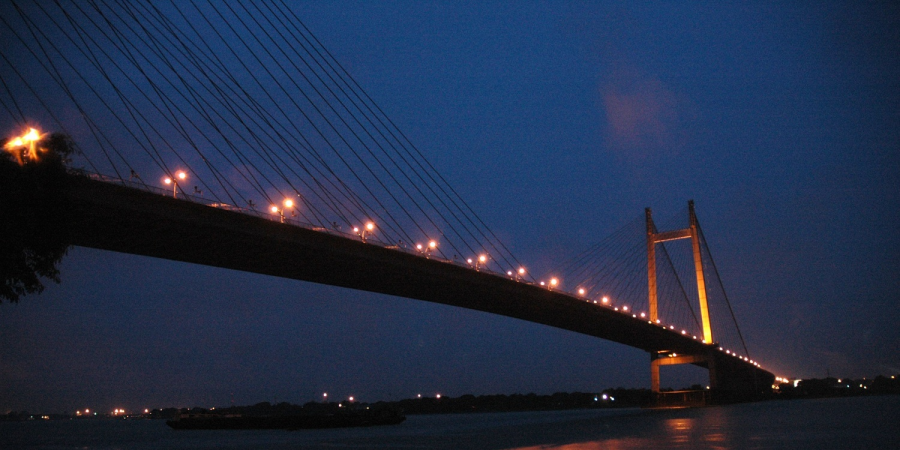

A number of notable locations add to The City of Joy's allure. One such example of magnificent architecture that makes Kolkata proud is the Howrah Bridge. Its origins can be traced back to significant historical events like World War II. The idea to build it was initially proposed in 1862. The Hooghly River needed to be crossed, according to the Bengali government, which is why the bridge was built. They asked the Chief Engineer of the East India Railway Company to examine the feasibility of the idea and create a plan. But for a variety of reasons, his recommendation was never put into practice.
In the entire world, the Howrah Bridge is thought to be the busiest cantilever bridge. It can hold around 100,000 cars and more than 150,000 pedestrians per day.
The Architecture of the Howrah Bridge: Two men's inventive minds, Mr. Walton of M/s Rendel, Palmer & Triton, created the Howrah Bridge. The design for the Bridge was also influenced by the Braithwaite Burn and Jessop Construction Limited Company. The construction of this magnificent edifice commenced in 1936 and was completed in 1942. It opened for business on February 3rd, 1943.
The length of each pillar on the Howrah Bridge is 468 feet. Rather than employing nuts and bolts, rivets were used throughout the Howrah Bridge's steel structure. It distinguishes itself from every other bridge in the nation with its recognizable feature.
A pontoon bridge, also called a floating bridge, was built between Howrah and Kolkata in the 1800s. But it wasn't strong enough to handle the volume of travel between the two cities or to weather the regular storms in the area. The new bridge was eventually put into use after several decades of searching by the government of Bengal. The Braithwaite Burn and Jessop Construction Company was awarded the contract to construct it.
Fascinating Details Regarding Howrah Bridge
The Howrah Bridge's genius has led to its inclusion in numerous poems and popular culture. It has a significant impact on the entire nation and city, and many visitors stay at Polo Floatel Kolkata to catch a closer look at it. As the only floating hotel in the city, leisure travelers choose to schedule a stay at Floatel, which floats on the captivating River Hooghly beneath the enormous Howrah Bridge.
The magnificent World War II did not destroy the Howrah Bridge. The Japanese attacks were taken into consideration when building the bridge. The government aimed to construct a bridge that would be impervious to assaults and nuclear conflicts.
Thus, if you are considering a trip to the city, make sure to check out the enormous Howrah Bridge!
